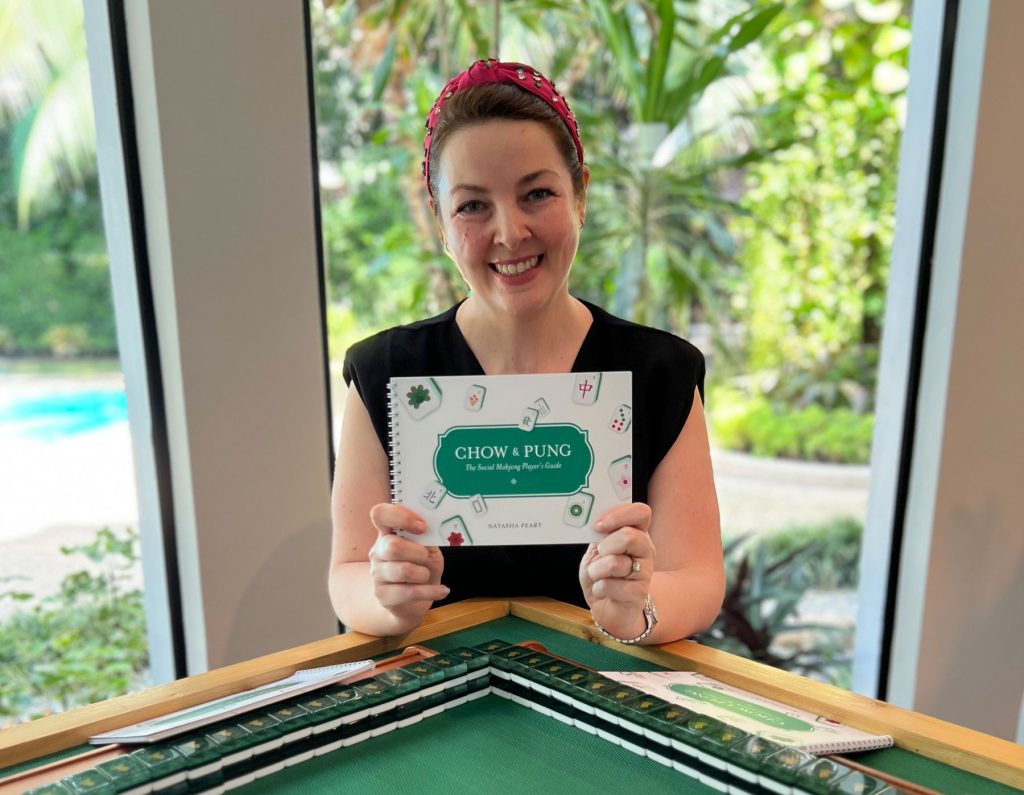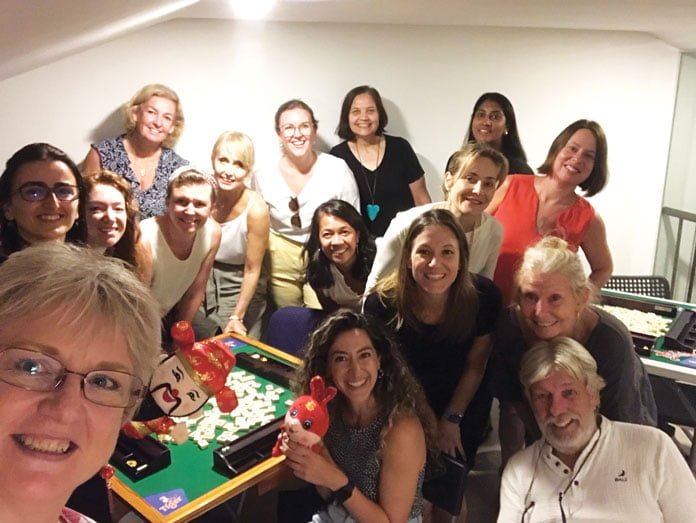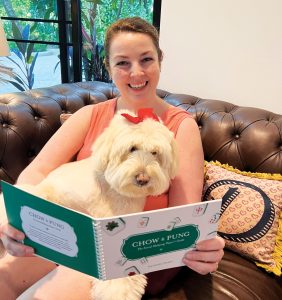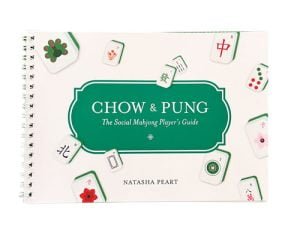 Creative writer Natasha Peart moved from Ireland to Singapore in 2015. When the pandemic hit, she felt displaced as more of her social circle started to repatriate. Realising it was time to make some new connections, she signed up to ANZA.
Creative writer Natasha Peart moved from Ireland to Singapore in 2015. When the pandemic hit, she felt displaced as more of her social circle started to repatriate. Realising it was time to make some new connections, she signed up to ANZA.
It was Natasha’s dog, Truffles, who led her to ANZA Mahjong during the pandemic. As they walked past Boomerang on Robertson Quay, she spotted our regular group of players hunched over mahjong boards, lost in concentration. Intrigued and envious of their pastime (when she had to return to work!), Natasha decided to find out more via a mutual friend who was already part of the ANZA Mahjong group.
“I’d never played before – the closest I’d come was playing Bridge with the nuns at school!” she admits. Little did she know how much the game would impact her life.
For those who don’t know, what exactly is mahjong?
Mahjong is usually played by four people, with 136 or 144 rectangular pieces called tiles. The goal of the game is similar to poker, in that the aim is to make matching sets and pairs. A set is three or four identical tiles or three consecutive tiles (or ‘melds’), and a pair is two of the same tiles (or ‘eyes’). To win mahjong a player must form four sets and one pair. You’re dealt a sequence of tiles (‘a hand’) and then you take turns drawing tiles from ‘the pack’ (aka ‘the wall’). The first person to form their sequence of tiles has ‘mahjong’.
 Tell us about your first mahjong session with ANZA …
Tell us about your first mahjong session with ANZA …
I was very nervous! But the mahjong group leader at the time broke the game down and made it something understandable and doable. On that first day I made new friends who I’m still close to over three years on.
What did you most enjoy about playing?
I love the social aspect of the game, the mental workout, and the fun. There’s always something to learn and you get a lot of tips from other players who’ve played mahjong elsewhere in the world.
So there’s more than one version of the game?
There are countless variations of mahjong across the globe, each with its own unique nuances. Upon joining ANZA Mahjong I was lucky to learn to play both Asian and Western mahjong simultaneously.
“ANZA is a fantastic place to learn mahjong and it has a wonderfully inclusive atmosphere”
How often did you play in the beginning?
Due to Covid restrictions at the time, we played in small groups in people’s homes. This really opened the frequency up and I got addicted quite quickly! I’d play at least once a week with ANZA.

How did your new book, Chow & Pung: The Social Mahjong Player’s Guide, come about?
In mahjong, chows and pungs refer to sequencing in the tiles: a chow being a run of three, a pung being three of a kind. The idea for the book came to me the first time I played. In Western mahjong, players commonly use a book as a reference during the game. The book we were using at ANZA Mahjong felt dated and offered no gameplay guidance at all.
Is this how your book stands out?
It made sense for Chow & Pung to offer some how-to-play guidance, especially when it comes to forming specific hands. Starting out, players usually stick to what’s known as ‘Ordinary Mahjong’; it’s a great, very straightforward hand. The broad selection of hands can be overwhelming so I’ve included a Starter Hands section in the book – a selection of hands which is perfect for beginners.
Had you written books before?
I’ve ghostwritten books for some high-profile clients but Chow & Pung is the first published under my own name.
What’s your ultimate goal for Chow & Pung?
To make mahjong accessible and fun to play. I hope that with the help of my book, anyone can enjoy mahjong without feeling intimidated. It’s both a reference and teaching guide and encourages you not to be afraid of getting stuck.
How long did it take you to write?
About a year. I carried out a lot of research and went through many prototypes. At the time of writing, I was living in an older landed home which was full of character. I felt it had seen lots of mahjong games over the years!
Was it challenging to write?
It certainly went through many iterations! I enjoyed breaking down the game and telling it as a story in places, sharing tips I’d picked up from players along the way along with pitfalls to avoid.
How do people respond when they discover you’ve written a book about mahjong?
At first, people are very surprised. Then they’re intrigued and keen to learn more. Some of the new hands are named after ANZA friends and family, so it’s always fun when someone spots one. Look out for ANZA Diamond member, Mary-Anne Battistessa’s hand, and of course, our ANZA Mahjong organisers past and present, Mandy Reinders-Hall and Sue Chamberlain. My husband Don and our dogs also get a mention!
What tips do you have for those interested in learning mahjong?
First, don’t take it too seriously and enjoy yourself! ANZA is a fantastic place to learn mahjong and it has a wonderfully inclusive atmosphere. Something I did during lockdown, which certainly helped my gameplay, was to put my mahjong tiles in a bowl and deal myself hands, then pick tiles until I had mahjong. This way, I grew familiar and comfortable with a great range of hands available.
Now you’re no longer living in Singapore, do you still play mahjong?
Absolutely! I’ve found a lovely group of mostly expats and we play a weekly game. And Chow & Pung has been a fantastic resource for new players to go by!
Find out more about ANZA Mahjong on our website at anza.org.sg/groups/mahjong/
 Fascinating Mahjong Facts
Fascinating Mahjong Facts
- In Chinese “mah jong” literally translates to “sparrows”
- Mahjong is said to have evolved from a card game first played in China over a thousand years ago, devised by a fisherman to distract sailors from the hardships of life at sea. Another popular legend links the game to Chinese philosopher Confucius
- A 2020 study from Frontiers in Neurology found that playing mahjong for 12 weeks (three times per week) improved the function of memory, planning and organisation
- The longest mahjong game recorded so far is believed to have been played by three Russians in December 2012. The game lasted 33 hours, 3 minutes and 45.8 seconds
Chow & Pung: The Social Mahjong Player’s Guide is available from Amazon Prime, $18.99. amazon.sg



 Fascinating Mahjong Facts
Fascinating Mahjong Facts




